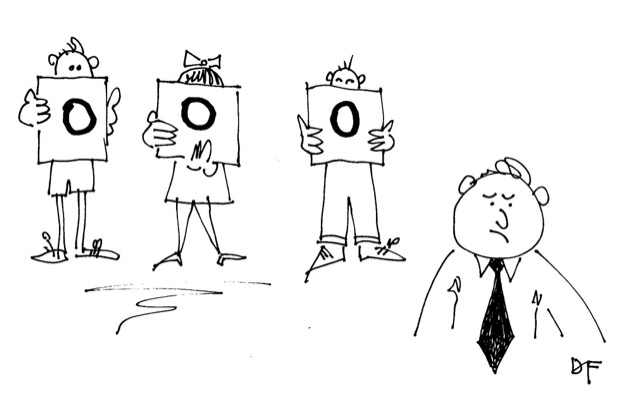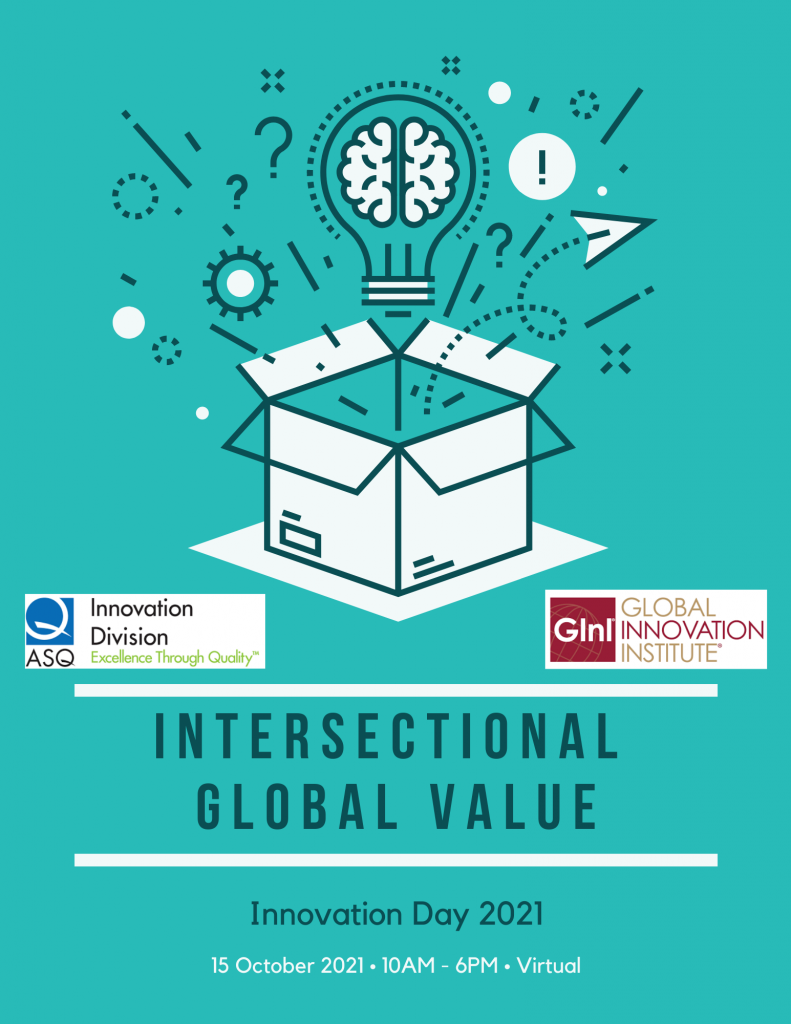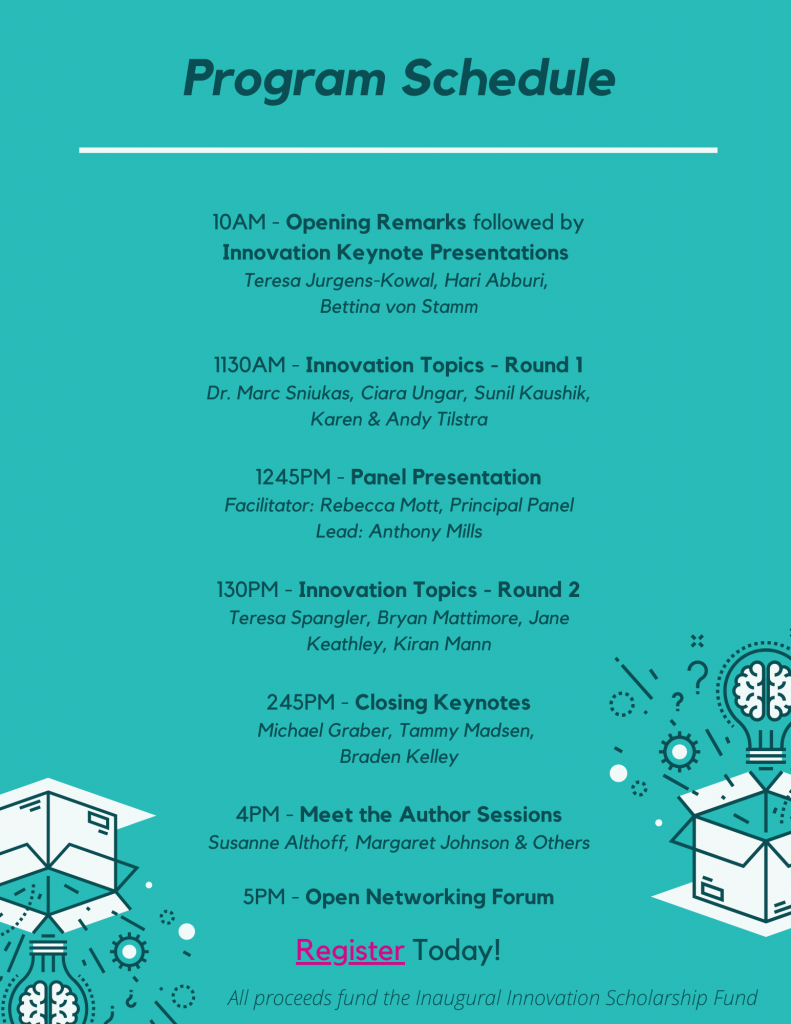
GUEST POST from Rachel Audige
The Fail Fast Fallacy is that while we speak of failing fast, many corporate executives are not going to do so successfully because a) corporates continue to expect success b) the highest achievers are the ones being asked to fail at what they are best at and c) we are injecting perfectionism into our testing and prototyping.
As lean and agile methods have permeated businesses both large and small, the notions of excellence and success have been replaced by catch cries around ‘failing fast, often and cheap’.
There is a certain amount of what we call ‘innovation theatre’ (the speak but not the action) around failure awards and risk rewards in the innovation ecosystem. It sounds brilliant but I am yet to walk into a room of employees that does not speak of ‘fear of failure’ in the organisation.
Notwithstanding some excellent programs around experimentation, with most clients, I hear:
- “You are not paid to experiment. You are paid to know.”
- “You can’t take risks or try anything new.”
- “There is no way that I will agree to take on a big project like that. I’d rather play it safe.”
- “We lose so much time getting all the boxes ticked.”
I now work with a variety of engineering companies and most not only encounter this issue but also cannot afford to fail. The investments are too substantial or the safety risks too great.
As a general rule, perfectionism is rewarded. Mistakes are not. The corporate paradigm is predicated on providing shareholder value and this does not leave a lot of wriggle room for mistakes.
There also seems to be a dissonance in organisations between what is preached and what is practiced or, in other words, what is promised and what is, in fact, punished. We hear the leadership talk about taking risks but, in parallel, see a colleague fired when an initiative fails.
EXPERTS DON’T LIKE TO FAIL
Not only is the general idea of failing an issue but, specifically, the ones most expected to ‘fail fast’ and be experimental are often those least willing to. Let me illustrate what I mean:
You know when you are amongst the high potentials in a corporate. You tend to get the ‘good gigs’. You are sent to head office for special training programs. You get more opportunities. You get more time with the boss. You also have more occasions to get involved in special projects.
One of the projects I was interested in when I was in a corporate role was part of a four-pillar strategy and the one I was dying to lead was around building an innovation culture. My title didn’t include the word ‘innovation’—no one had that in the organisation at the time—but I was given the green light to drive an innovation community, train coaches and inject innovative thinking across the business. I received the flack, but I also enjoyed the buzz. I did this alongside other ‘high potentials’. Anyone who was given permission to step outside their objectives and spend time helping others to solve their problems tended to be perceived as being excellent at their day job and was encouraged to do more.
Most of the people in the project were high performers in their roles and, ironically—unless an exceptional growth mindset prevails— probably the least likely people to want to be seen making mistakes or failing.
This is entirely consistent with research performed by Liz Wiseman who identified how our expertise and expectation of excellence when working in our area of expertise prevents us from exposing ourselves to less than excellent work.
A similar desire for excellence and perfectionism creeps into prototyping and the way we test out ideas. There is a tendency to overwork the prototype, to create something fully-functioning. As Alberto Savoia—who coined the word ‘pretotyping’—said: “The tough part is getting over our compulsion for premature perfectionism and our desire to add more features, or content, before releasing the first version.”
A pretotype is a stripped-down version of a product, used to merely validate interest. For your restaurant with delivery service, a pretotype could be a simple website that tracks how many visitors come to your page, giving you an idea as to whether or not people would be interested in ordering food from you.
Melbourne-based thought leader, Steve Glaveski, writes that corporate executives have understood the need to prototype but are not tending to ‘fail fast’ because “What they create is too often fully-functioning concepts which cost thousands of dollars and take months to develop.”
This may be particularly true for the technology providers. “People get stuck into tech too quickly,” explains Streicher Louw, Behavioural Strategist and former Innovation Lead at NBN. “They try to build the prototype in too high a fidelity. The moment you start carving that prototype into tech, it is less malleable.”
Not only is it ‘less malleable’ but the teams behind the prototyped concept have a strong incentive to ‘prove’ the value of the investment. The more you invest in it, the harder it will be to let it go and admit it was the wrong thing. You are likely to add more bells and whistles and expect that this will win the customer over.
Louw, who spent seven years in Australia’s National Broadband Network (NBN) where there is a strong culture of Human Centred Design and experimentation, says: “We get so much more for our efforts if we take the time to work out what problem a product solves for a customer and how he intends to use it before we start to build it.”
In many cases, it leads to months of wasted time and large sums of money, energy, hopes and dreams.
So how can we do a better job of failing fast?
EMBRACE DISCOMFORT
The challenge is to make failing more palatable, more tenable. To do that we need to get comfortable with feeling uncomfortable. How? There are a number of steps organisations can take and environments they can create.
1. Don’t just tell them, enable them.
At innovation conferences, we occasionally hear from corporate intrapreneurs who have instigated failure awards or CEOs who have learned to be vulnerable with their organisation and share mistakes. Both remain the exception. The most realistic initiatives I have encountered do not overplay the tolerance for risk taking or mistakes, rather, they remove obstacles for doing things differently and invest in the enablers (robust methods, resources, skilled experts). People are rewarded for working with other teams to help solve their problems. More focus is put on the work that goes on behind the scenes to get to a result (good or bad). People are not simply told to ‘go and innovate’; they are offered solid training in methods that will help with the full innovation journey. People are not fired for trying.
2. High performers should work outside their comfort zone to free them up to make mistakes.
Have you noticed how people feel safer asking what they think is a ‘stupid question’ in contexts where they are not expected to know better? In my innovation lead role, the workshops I ran for product managers in divisions outside mine were probably where I could bring most value. I was expert in a method but knew nothing about their business and felt entirely free to ask the naive and pointy questions. The participants were also more receptive to my input because I was not invested in the project; I wasn’t perceived as having an agenda.
“Put your staff in situations where they can’t help but make mistakes. Position them at the bottom of a learning curve where they’ll need to scramble back to the top by taking small steps, making mistakes, and getting fast feedback. Do more than make failure an option, make it inevitable,” advises Liz Wiseman.
This realisation is apparent in the Wiseman Group’s research which suggests that we should deliberately put people outside their area of expertise so that they give themselves permission to produce the minimum viable product, “not because they are told to, but because that’s all they know how to do”.
When we work in this ‘rookie mode’, as Wiseman calls it, we approach things in surprisingly productive and innovative ways.
Many of us have experienced this and I use this when assigning innovation champions outside their area of expertise. When we step out of our comfort zone and are not expected to be experts, we are less weighed down by expectations. Our novice state makes us more curious, we listen better and we are more humble and receptive to others. When I have managed others or observed myself in this mode, I find that I am more likely to make mistakes but I get over them faster. You tend to chunk things down and check on how you are doing and learn and adjust in a more agile way.
3. Run thought experiments that embrace ambiguity (with constraints).
One of the safest ways of testing what you know before talking with the customer is to run ‘safe’ thought experiments. Some simple yet robust approaches I have used include:
▶ Mapping exercises where you walk in the shoes of your customer and explore the ‘so what?’ of the key features of a given offering. SIT calls this ‘Attribute Value Mapping’ and it’s a great way of not only identifying sticky value propositions but unearthing what you need to improve to make the proposition all the more true!
▶ Bias-busting exercises using tools to scan for any mental fixedness that might have undermined the concept—before you move to testing it.
▶ Asking the ‘empty chair’. It is an established practice to include empty chairs for absent stakeholders. You then check your idea from their perspective.
4. Get used to working with a range of low-fidelity prototypes.
Try to use the fastest method of validation that you think is reasonable. The cadence of business is increasing. Cycles have to decrease. Fast prototyping is crucial. The term comes from the Greek word prōtotypon meaning ‘a first or primitive form’. It is just that.
“You will uncover the product you are supposed to make by prototyping the one you thought you should make,” says Streicher Louw.
If we are truly going to ‘fail fast’, we need to avoid falling in love with our idea and move quickly and cheaply. Be experimental and document both your hypotheses and what you learn. Teams should be created that enable effective experimentation and include a copywriter, a graphic artist, a data specialist and someone well versed in the products.
In my experience, there is tremendous value in rough concepts as a quick and easy way of testing functionality rather than a more polished visual representation of a product or service. The more finished it is, the less they engage and feel they can contribute. It feels done and dusted.
“When the first person you give it to uses it differently to how you intended, rather than educating the user you adapt the design,” says Louw.
The mindset needs to be one that is totally geared towards adapting to the user. It should be rough and approximate so that it is as flexible as possible, meaning that you can learn and change it quickly and for zero cost as you do.
Reid Hoffman, founder of LinkedIn, warns that: “If you are not embarrassed by the first version of your product, you’ve launched too late.” And nobody wants to do that.
Most of us cannot afford to be playing it safe. We need to accelerate the learning cycle. If we want this idea of failing fast to be meaningful, we need to give people the frameworks to innovate, the space to run safe thought experiments, to build iteratively and the opportunity to work outside their area of expertise to free them up from their own aversion to failure.
12 WAYS TO ‘FAKE IT UNTIL YOU MAKE IT’
In most cases, these should be shared with target customers or users to have them interact with it, respond, hone and, if possible, co-create.
1. Diagrams & Maps
Any sort of diagram or map can be a prototype. That includes stakeholder, process, customer journey, jobs to be done, UX maps. Work through what the customer is seeking to do and explore current and proposed solutions to see where they fit along the customer journey or on a simple map.
2. Stories
News of the Future: Tell the story of your idea and describe what the experience will be like. Letter to Grandma: Would she understand your concept?
3. Cardboard
Create low fidelity prototypes; simply mock up a concept using cardboard, sticky tape, bluetack and imagination and see people interacting with it. This way they can very rapidly work out how people use it. Build the next iteration incorporating user interaction with a first level of technology but with a human behind it, the processing is still simulated. Once the cardboard has done the job, you may want to move to prototyping tools such as POP or Invision to build an app that people can play with.
4. Sketches
We all know that a picture tells a thousand words.
5. Lego prototyping
Bring in some customers and describe your product. Have them build it with Lego while your model remains hidden. Bring yours out and discuss only once you have gleaned insights from their models.
6. Storyboarding
This is a visualisation of the complete experience over time.
Break it into scenes to make sense of interactions. Invite your customers to react and adapt.
7. Wizard of Oz pretotypes
This is rather artful deception in that the MVP is an illusion. There is nothing behind it. Zappos is known for having started with no store or inventory of their own; they simply had a web page. Dropbox was launched on the back of a simple three-minute video on ‘Hacker News’ which gave the founder immediate, high quality feedback.
It is a clever approach but should not feel like false advertising as that will quickly erode trust.
8. Social media ads, eDMs and landing pages
Eventbrite, Google, LinkedIn, Facebook—all these platforms enable you to cheaply test a concept and, based on click-rate, decide if there is a market. This is a good way to test purchase intent. It is also a good way to test two different campaigns with distinct value propositions.
9. Crowdfunding
The beauty of this approach is that it gives you the ability to test the market while raising funds to build it. In 2012 in what was then the most successful Kickstarter (crowdfunding platform) campaign in history, Pebble Technology Corporation was able to prove a market for wearable tech long before any of the tech giants moved in that direction.
10. 3D prototypes
Most of us have now seen a 3D printer in action. They are astonishing. They are also a relatively cheap way of testing the look and feel—as opposed to the functionality—of a concept.
11. Pilot Simulations
This is simply small scale testing of an experience. It is possible to create a different experience in a single store, for example, without generalising across all stores.
12. Run ECHO sessions
Use very rough sketches of concepts to enable clients to Engage, Co-create and HOne the solution.
Image credit: Rachel Audige
 Sign up here to get Human-Centered Change & Innovation Weekly delivered to your inbox every week.
Sign up here to get Human-Centered Change & Innovation Weekly delivered to your inbox every week.

![]() Sign up here to get Human-Centered Change & Innovation Weekly delivered to your inbox every week.
Sign up here to get Human-Centered Change & Innovation Weekly delivered to your inbox every week.








